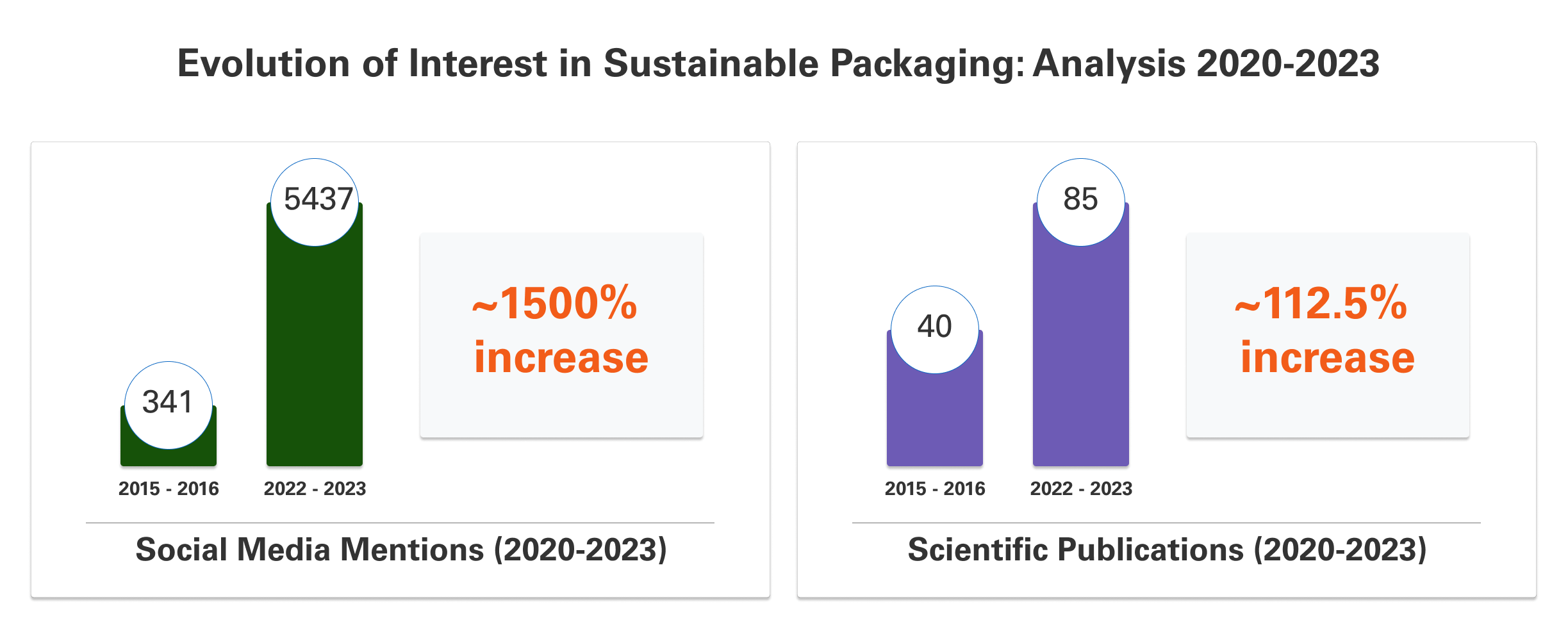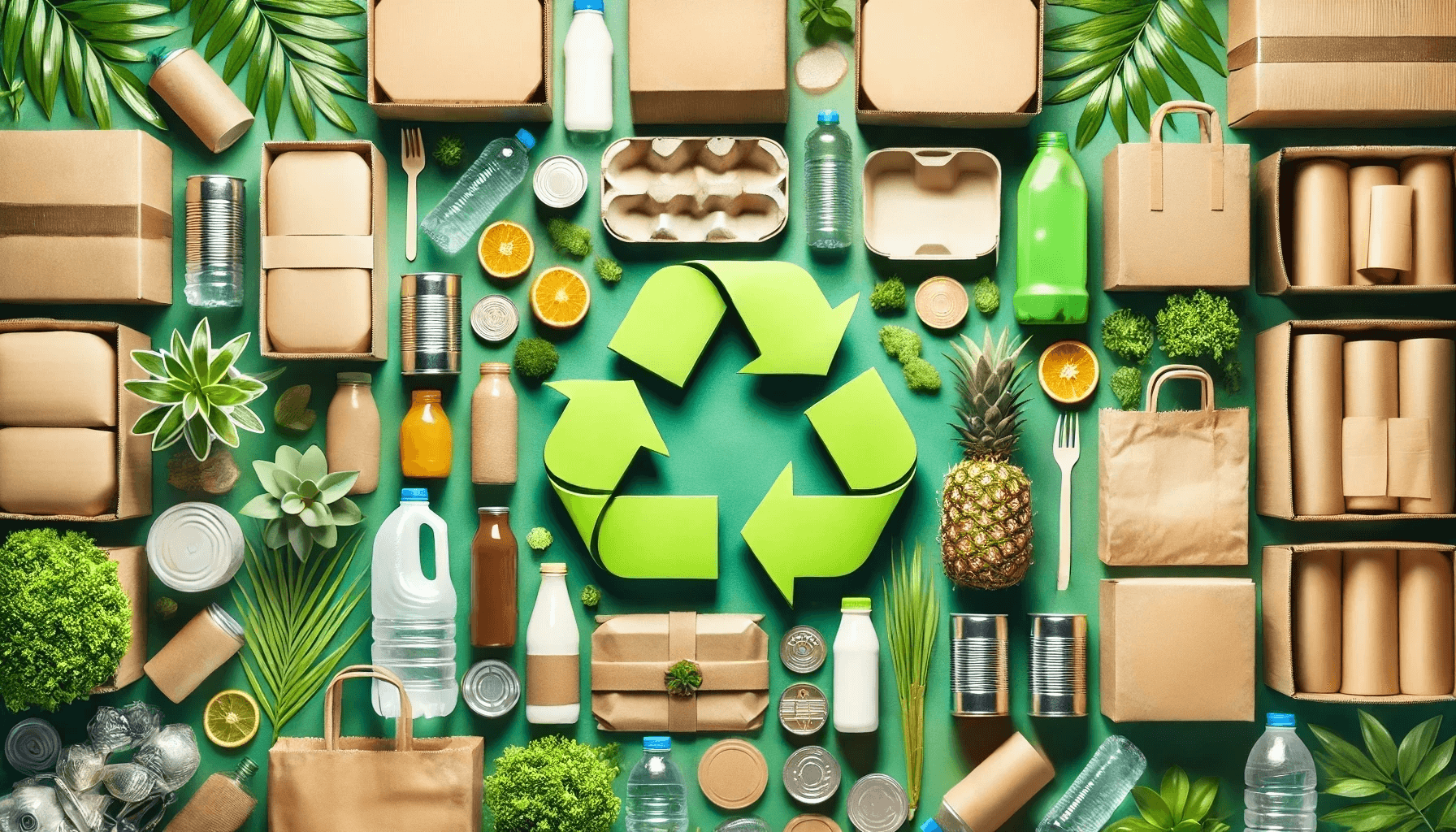Nowadays, in developed and competitive consumer-driven worlds, enormous demands are being created for sustainable packaging, stringent food safety protocols, and strict compliance. The manufacturers, on the other hand, are under immense pressure to realign their practices with both environmental sensitivities and consumer preferences. This article investigates in depth the critical necessity of the manufacturers' adjustment to the future development of sustainable packaging solutions, precise food labeling, and food safety.
The packaging waste challenge mounts in the E-commerce era
The 'packaging waste', which now represents over 40% of total waste production, mainly accelerated since the beginning of eCommerce. Packaging is seen as a protective barrier for the products to reach the customer as a safe and convenient, customized offering from the supplier to the customer. But this customization and convenience are causing the environmental issue of the packaging waste.
As a result, packaging waste multiplies, proliferating even more because of the exponential growth in online shopping; the use of packaging materials worldwide more than triples in just a decade. As part of this increase, the environmental footprints of plastics, cardboard, and other packaging materials contribute deeply to overflowed landfills, marine pollution, and greenhouse gas emissions. This has created a multi-faceted waste management challenge with the rise of single-use packaging, particularly in the food sector.
Recycling is one of the most important strategies to manage packaging waste, as compared to the more than 9,000 municipal recycling programs in the US alone. Despite its importance, the same very great issues that the recycling system faces include a lack of municipal programs in some areas and the contamination of recyclable packaging. Their processing facilities are strained and age, with an incapacity to handle burgeoning packaging recovery in volumes. There are great investments required in new technologies and infrastructure that will modernize recycling capabilities.
The processing capacities of the existing recycling infrastructure in most regions fall short of the growth in waste. For instance, where in the U.S., only 32% of waste packaging is processed and recycled, the remaining share of waste goes to landfills or incineration. Large-scale potential for garbage recycling is also made infeasible due to high contamination rates, often over 25%, with the addition of non-recyclables to recyclable items. Place the other way: the recycling process turns out to be complex due to a lack of fixed standards for recycling in each municipality, thus leading to inefficiencies and high costs.
Regulations for Extended Producer Responsibility: Game Changer
The EPR program represents a new paradigm of waste management—a fiscal transfer from the taxpayers to the producers, those owning the brands, and the manufacturers themselves. They are to be responsible for the entire life cycle of their products, primarily during the post-consumer stages. This is to motivate the design of products more convenient for recycling, to cut down packaging wastes, and, later on, to minimize environmental effects.
EPR is not a statutory requirement alone; it is a global movement that has gained momentum. While it all started in Europe and had initial enforcement there in countries such as Germany and France, today it is spreading across the globe. Canada has adopted EPR in North America, and many US states, including California, Oregon, and Maine, have already enacted their own versions of the legislation. The business effect of EPR will be enormous; it will force businesses to rethink packaging design, material selection, and end-of-life management strategy.
Consumer Influence: A Driving Force for Change
Clearly, consumers' push for sustainable packaging is growing by the day. In the 2023 Buying Green Report, it is shown that 74% of consumers are ready to pay a premium for products packed in green packaging. This is no more a passing trend in consumer demand; rather, it speaks of a radical change in the value structure of society toward becoming green. As consumers continue to educate themselves about the environmental impact of their purchasing choices, they gravitate toward brands that mirror these values.
The study added that 67% of all consumers intentionally look for information on the sustainability practices of brands prior to purchase. This shows that transparency and sustainability are not just value-added benefits for a brand but rather blocks in the making of a value proposition. Brands that do not start fitting in at this juncture will lose out to competition with a greater degree of conscience interest in the environment.
EPR Impact - Who is Affected?
At its core, EPR legislation directly affects business enterprises that are involved in the manufacture or packaging of products and that are distributed to consumers through retail or e-commerce channels. Basically, any packaging reaching the consumer's curbside trash or recycling stream falls under EPR jurisdiction. Retailers are liable, as long as they label a product whose packaging enters the consumer waste stream.
EPR is not an issue of business; it is business. It isn't an issue of compliance, it's a new way to think about packaging. Business corporations need to plan the ability to recycle, the parts of their packaging that can be accessed and separated, and the ability to decrease the carbon footprints that it leaves behind. Core to this will be a responsive supply chain - from raw material suppliers to waste management - so that the final packages meet the stringent requirements put in place by EPR law.
Digicomply TrendRadar: Following the Wave of Sustainable Packaging
Digicomply's TrendRadar tracks the mentions of Sustainable Packaging on social media and provides crucial insight into public sentiment. From an average of 341 in 2020, surging to an impressive 5437 in 2023, it shows an increase of more than 1500%. This underscores that sustainable packaging has become important public discourse, thus impinging on manufacturers to make ecologically conscious solution priorities.

In addition, the concern of scientists is also growing about the problem, and it is reflected in the trend of scientific publications. If in 2020 there were about 40 scientific publications by great researchers, so in 2023, their number rose to 85, which is an increase of the level of academic attention to the issue of sustainable packaging by 112.5%.
Manufacturers must seek to implement sustainable packaging solutions actively and, in the process, continue ensuring the safety of food for consumers while keeping pace with new compliance requirements. If manufacturers can embrace implementing Extended Producer Responsibility legislation and service consumer interests toward sustainable options, then not only the firm's image to be sentinels for the environment will be improved but there will also be an increase in brand loyalty and customer 'stickiness'. This journey will streamline a way forward that allows manufacturers to build towards a more sustainable and resilient future.
SGS Digicomply is a strategic tool that will help me meet resulting objectives. Its overall, detailed, data- and trend-analysis functionality provides the manufacturer with the necessary leverage for making pertinent decisions regarding the implementation of industry standards and consumer expectations. Explore SGS Digicomply platform now.





.webp?width=1644&height=1254&name=Food%20Safety%20Dashboard%201%20(1).webp)
